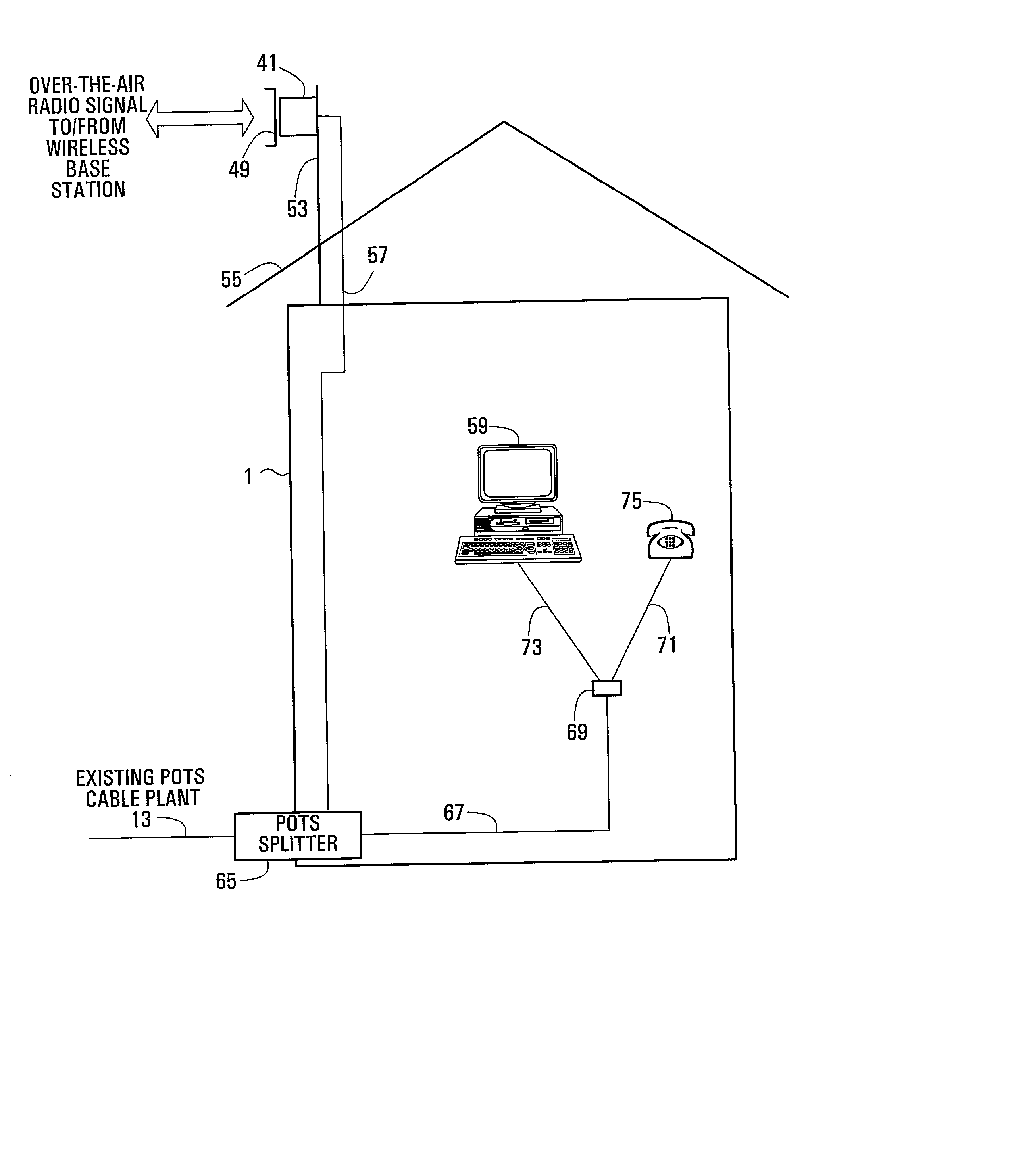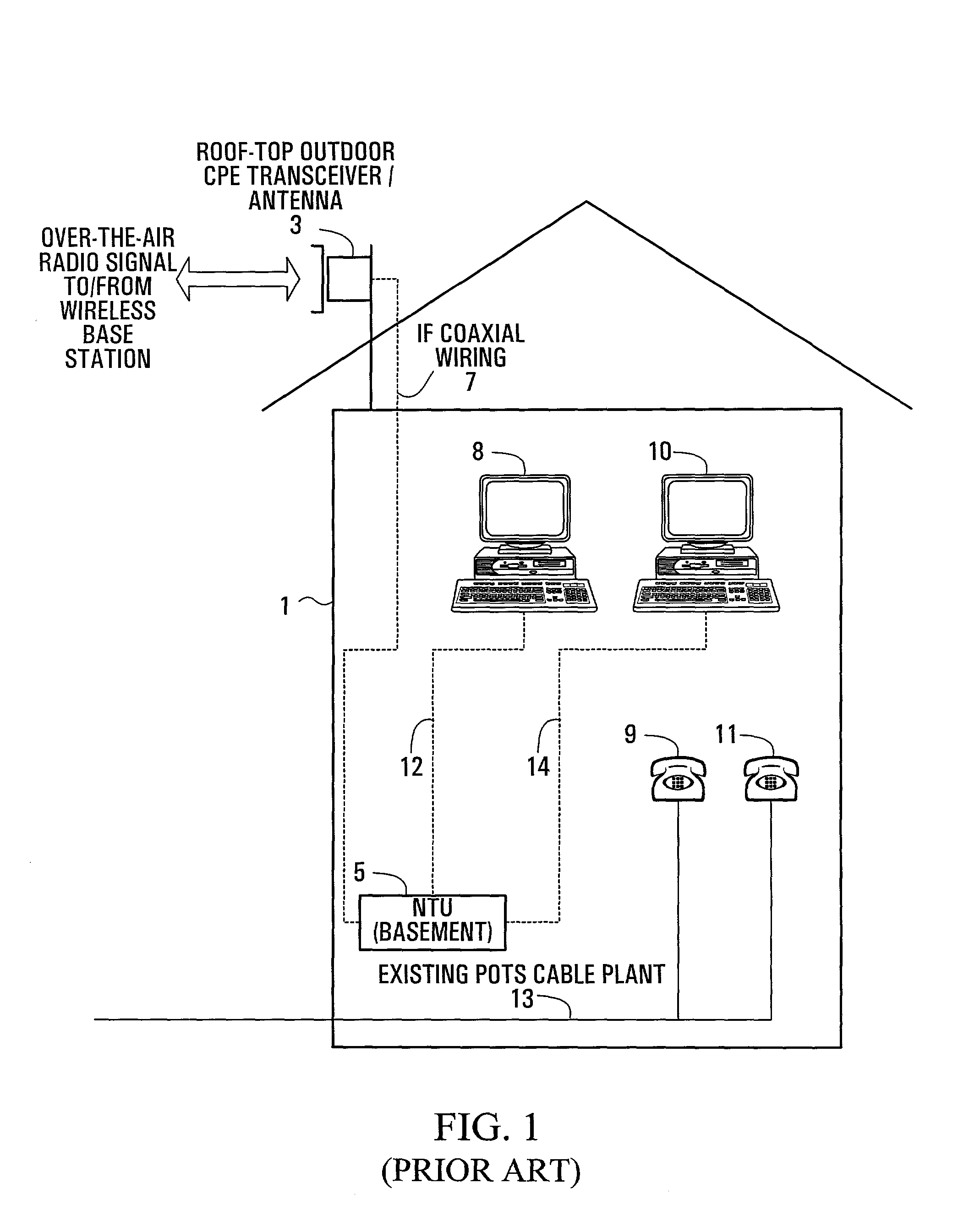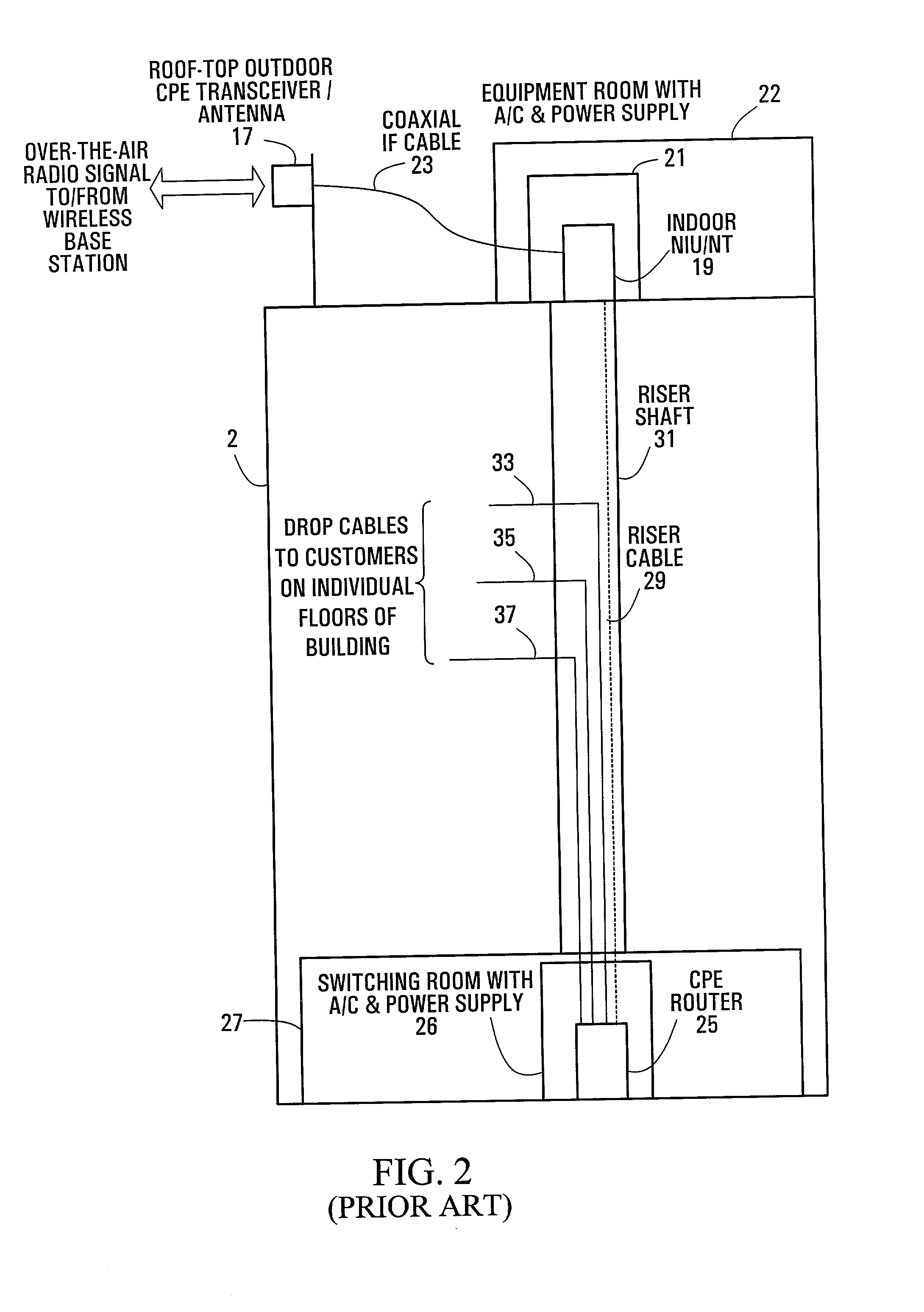Transceiver for fixed wireless access network applications
a wireless access network and receiver technology, applied in wireless communication services, electrical equipment, wireless communication services, etc., can solve the problems of increasing the cost of coaxial cable installation, and increasing so as to facilitate the management of transceiver functions, reduce the cost of wireless network installation, and improve the reliability of the system
- Summary
- Abstract
- Description
- Claims
- Application Information
AI Technical Summary
Benefits of technology
Problems solved by technology
Method used
Image
Examples
Embodiment Construction
[0025] FIG. 3 shows a communication signal conversion unit according to one embodiment of the present invention. Referring to FIG. 3, the unit 41 comprises a microwave transceiver 43, an intermediate circuit and baseband radio modem 45 and a digital network interface 47. The microwave transceiver 43 receives microwave communication signals via the microwave antenna 49 and includes a down-converter (not shown) for down-converting the received microwave frequency signal to an intermediate frequency signal which is then passed to the IF circuit and baseband radio modem 45. The microwave transceiver 43 also includes an up-converter (not shown) for up-converting intermediate frequency communication signals generated by the IF circuit and baseband radio modem 45 to microwave frequencies for wireless transmission by the microwave antenna 49. The IF circuit and baseband radio modem 45 includes a demodulator (not shown) for demodulating the IF signal received from the microwave transceiver 4...
PUM
 Login to View More
Login to View More Abstract
Description
Claims
Application Information
 Login to View More
Login to View More - R&D
- Intellectual Property
- Life Sciences
- Materials
- Tech Scout
- Unparalleled Data Quality
- Higher Quality Content
- 60% Fewer Hallucinations
Browse by: Latest US Patents, China's latest patents, Technical Efficacy Thesaurus, Application Domain, Technology Topic, Popular Technical Reports.
© 2025 PatSnap. All rights reserved.Legal|Privacy policy|Modern Slavery Act Transparency Statement|Sitemap|About US| Contact US: help@patsnap.com



